Themed collection Next Generation Nanoelectrochemistry

Poster list
Faraday Discuss., 2022,233, 392-394
https://doi.org/10.1039/D2FD90006H
List of participants
Faraday Discuss., 2022,233, 395-397
https://doi.org/10.1039/D2FD90007F
Preface

Faraday Discuss., 2022,233, 9-9
https://doi.org/10.1039/D2FD90005J
Concluding remarks: next generation nanoelectrochemistry – next generation nanoelectrochemists
This paper describes the scientific journey taken through electrochemistry to arrive at present-day nanoelectrochemistry and considers how the area might develop in the future, particularly in light of the papers presented at this Faraday Discussion.

Faraday Discuss., 2022,233, 374-391
https://doi.org/10.1039/D2FD00020B
Potential-induced wetting and dewetting in pH-responsive block copolymer membranes for mass transport control
Potential-induced wetting and dewetting behaviors in pH-responsive block copolymer membranes are investigated to establish a promising mass transport control system for ultrasensitive sensing applications.
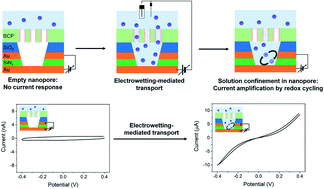
Faraday Discuss., 2022,233, 283-294
https://doi.org/10.1039/D1FD00048A
Carbon nanospike coated nanoelectrodes for measurements of neurotransmitters
A thin layer of carbon nanospikes is grown on etched metal wires to fabricate nanoelectrodes. This method exhibits promising potential for mass fabricating carbon nanoelectrode sensors.

Faraday Discuss., 2022,233, 303-314
https://doi.org/10.1039/D1FD00053E
Nano-confined electrochemical reaction studied by electrochemical surface forces apparatus
The electrochemical surface forces apparatus (EC-SFA) we developed enables study of electrochemical reactions in a solution nano-confined between electrodes with varying distance at nm resolution.
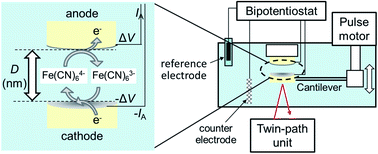
Faraday Discuss., 2022,233, 206-221
https://doi.org/10.1039/D1FD00060H
Spiers Memorial Lecture. Next generation nanoelectrochemistry: the fundamental advances needed for applications
After introducing nanoelectrochemistry, this introductory lecture focuses on recent developments in two major application areas of nanoelectrochemistry; electrocatalysis and using single entities in sensing.
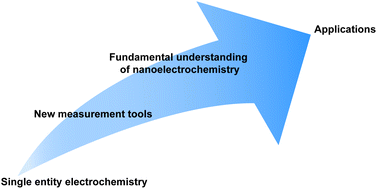
Faraday Discuss., 2022,233, 10-32
https://doi.org/10.1039/D1FD00088H
In situ surface enhanced Raman spectroscopy study of electrode–polyelectrolyte interfaces
A new electrochemical in situ SERS test method is suitable for the study of electrode–polyelectrolyte interfaces. It is realized by screen printing electrodes (SPE) with a compact planar three-electrode structure.
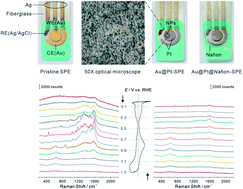
Faraday Discuss., 2022,233, 100-111
https://doi.org/10.1039/D1FD00051A
Formation sequence of solid electrolyte interphases and impacts on lithium deposition and dissolution on copper: an in situ atomic force microscopic study
In situ AFM monitoring of the morphology evolution of Li deposits reveals that SEIs could be more influential on Li dissolution, and spatial integration of the SEI shell on Li deposits is important to maintain reversible deposition and dissolution cycles.
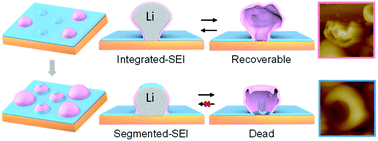
Faraday Discuss., 2022,233, 190-205
https://doi.org/10.1039/D1FD00043H
Inclusion of multiple cycling of potential in the deep neural network classification of voltammetric reaction mechanisms
Deep neural networks applied to three cycle voltammograms showed significant advantages in classifying difficult simulated E, EC1st and EC2nd processes.
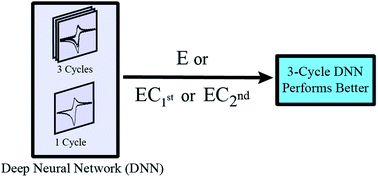
Faraday Discuss., 2022,233, 44-57
https://doi.org/10.1039/D1FD00050K
Nanocollision mediated electrochemical sensing of host–guest chemistry at a nanoelectrode surface
Electrochemical (EC) measurement of nanoparticle impact on electrode provide an effective approach for studying the dynamics of host–guest chemistry and shed light on a convenient EC sensor for the recognition of target molecules with the aid of CB7.
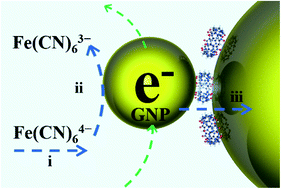
Faraday Discuss., 2022,233, 222-231
https://doi.org/10.1039/D1FD00054C
Hybrid scanning electrochemical cell microscopy-interference reflection microscopy (SECCM-IRM): tracking phase formation on surfaces in small volumes
Interference reflection microscopy allows real-time visualisation of the scanning electrochemical cell microscopy meniscus and nanoscale features within it.
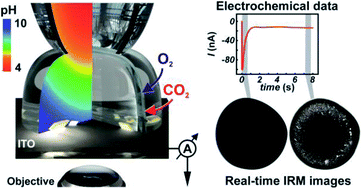
Faraday Discuss., 2022,233, 122-148
https://doi.org/10.1039/D1FD00063B
Development of multifunctional nanopipettes for controlled intracellular delivery and single-entity detection
Voltage-controlled, minimally-invasive and targeted intracellular delivery with in situ single-entity detection capability is demonstrated using a nanopore-CNE nanopipette, which is convenient for single-cell analysis.
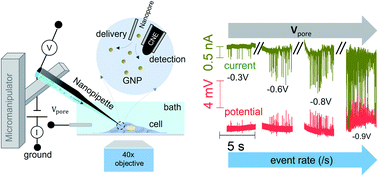
Faraday Discuss., 2022,233, 315-335
https://doi.org/10.1039/D1FD00057H
Polyaniline nanowire arrays generated through oriented mesoporous silica films: effect of pore size and spectroelectrochemical response
Individual nanofilaments of polyaniline (PANI) were electrogenerated through vertically aligned mesoporous silica membranes, exhibiting very fast responses to electrochemical stimuli.
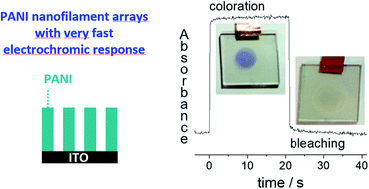
Faraday Discuss., 2022,233, 77-99
https://doi.org/10.1039/D1FD00034A
Electrochemically probing exciton transport in monolayers of two-dimensional semiconductors
Here, we apply carrier generation-tip collection scanning electrochemical cell microscopy to visualize carrier transport in WSe2 structures approaching the monolayer limit, ultimately revealing surprisingly long exciton transport distances.
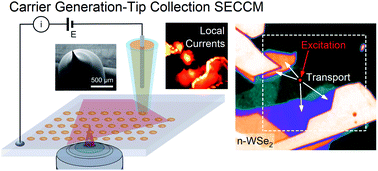
Faraday Discuss., 2022,233, 163-174
https://doi.org/10.1039/D1FD00052G
An ultra-low noise amplifier array system for high throughput single entity analysis
A four-channel amplifier with a high bandwidth (>100 kHz) was developed by designing a two-stage amplifier with low input capacitance. Its performance was verified in single nanoparticle collision experiments, and in single-molecule nanopore assay.

Faraday Discuss., 2022,233, 33-43
https://doi.org/10.1039/D1FD00055A
Nanostructured carbon-fiber surfaces for improved neurochemical detection
Increasing the surface roughness of carbon-fiber microelectrodes with argon-plasma treatment, while leaving the surface functional groups unchanged, significantly impacts detection of neurochemicals with fast-scan cyclic voltammetry.
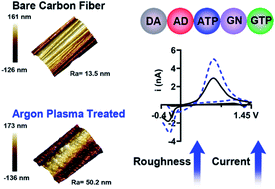
Faraday Discuss., 2022,233, 336-353
https://doi.org/10.1039/D1FD00049G
Lateral voltage as a new input for artificial lipid bilayer systems
We introduced a lateral voltage as a new input for use in artificial lipid bilayer systems in addition to the commonly used transmembrane voltage. The results indicate that the lateral voltage effectively regulates the transmembrane current.
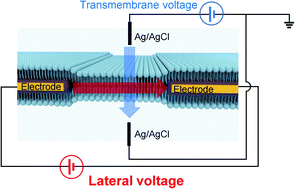
Faraday Discuss., 2022,233, 244-256
https://doi.org/10.1039/D1FD00045D
Engineering PtCu nanoparticles for a highly efficient methanol electro-oxidation reaction
A facile one-pot strategy is reported for the synthesis of carbon-supported PtCu alloy nanoparticles with Pt-rich surfaces for a highly efficient methanol electro-oxidation reaction. Cu downshifts the d-band center of Pt and improves the CO tolerance
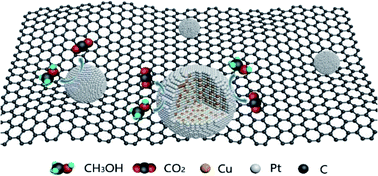
Faraday Discuss., 2022,233, 232-243
https://doi.org/10.1039/D1FD00047K
iR drop in scanning electrochemical cell microscopy
An analytical method to assess and compensate for the iR drop in SECCM is presented.
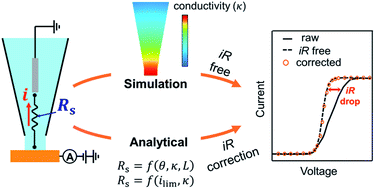
Faraday Discuss., 2022,233, 149-162
https://doi.org/10.1039/D1FD00046B
Electrochemical characterization of individual oil micro-droplets by high-frequency nanocapacitor array imaging
CMOS-based nanocapacitor arrays allow local probing of the impedance of an electrolyte in real time and with sub-micron spatial resolution. We report on the physico-chemical characterization of individual microdroplets of oil in a continuous water phase.
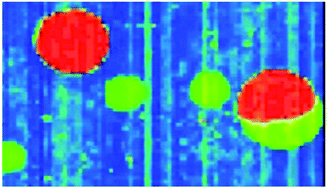
Faraday Discuss., 2022,233, 175-189
https://doi.org/10.1039/D1FD00044F
Nanopore-based measurement of the interaction of P450cam monooxygenase and putidaredoxin at the single-molecule level
The interaction between a single P450cam monooxygenase and its redox partner putidaredoxin (Pdx) was monitored via transient ionic current by using functionalized glass nanopores.
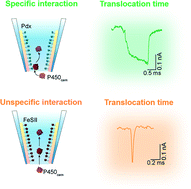
Faraday Discuss., 2022,233, 295-302
https://doi.org/10.1039/D1FD00042J
Advanced nanoelectrochemistry implementation: from concept to application: general discussion
Faraday Discuss., 2022,233, 354-373
https://doi.org/10.1039/D2FD90004A
Emerging electrochemical methods at the nanointerface: general discussion
Faraday Discuss., 2022,233, 257-282
https://doi.org/10.1039/D2FD90003C
Electrochemical data mining: from information to knowledge: general discussion
Faraday Discuss., 2022,233, 58-76
https://doi.org/10.1039/D2FD90001G
State of the art energy conversion at the nanointerface: general discussion
Faraday Discuss., 2022,233, 112-121
https://doi.org/10.1039/D2FD90002E
About this collection
We are delighted to share with you a selection of the papers associated with a Faraday Discussion on Next Generation Nanoelectrochemistry. More information about the event may be found here: http://rsc.li/electrochemistry-fd2021. Additional articles will be added to the collection as they are published. The final versions of all the articles presented and a record of the discussions will be published after the event.
Nanoelectrochemistry is important not only for achieving ultra-sensitive applications in fields ranging from energy to bioanalysis, but also contributes to more fundamental understanding of processes on this scale. While electrochemical processes occur within confined geometries at the nanometre scale, electrochemistry endows us with an ever-increasing ability to measure and understand with unprecedented precision, creating enormous opportunities.
This Faraday Discussion meeting address the challenges in both fundamental and applied nanoelectrochemistry where new concepts and new knowledge play key roles. This meeting also encourages cross-disciplinary interactions for electrochemistry with biophysics, nanofabrication, informatics, electronics and beyond.
At this Faraday Discussion, we will discuss new concepts and knowledge within the field of nanoelectrochemistry, including the new methods and novel applications. These new methods for achieving high precise electrochemical measurement at nanoscale, make it possible to provide fundamental electrochemical concept/tool/techniques to integrate with advanced spectroscopy and informatics technology to achieve real-life applications.